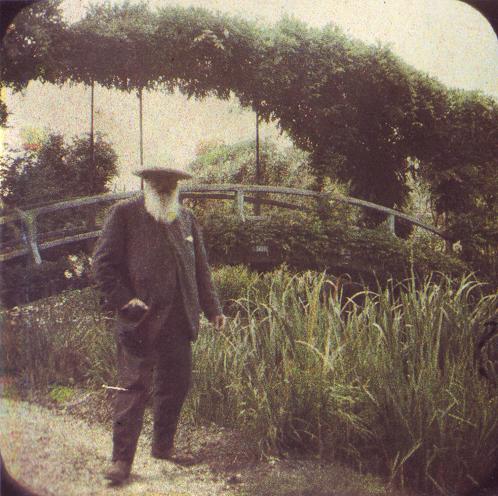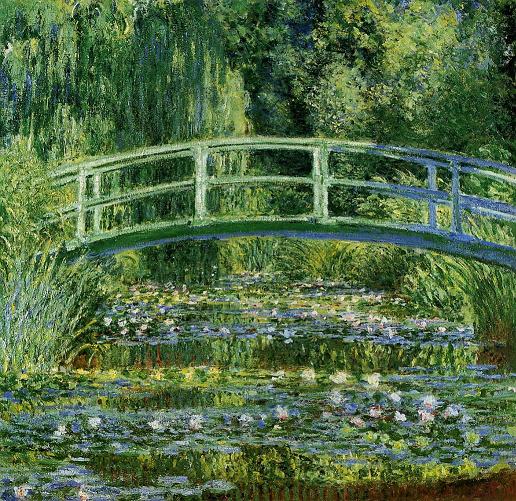
LIFE AS MYTH
![]()
JOURNAL
![]()
JOURNAL 2012
The seeds of wisdom
Leaning into the answer
![]()
SPRING 2012
Lessons from the lily pond
Color & meaning in lotus mythology
Color through an ever shifting glass
![]()
LIFEWORKS
![]()
ATLAS
![]()

SPRING 2012
WHEN WALLS BECOME DOORWAYS
Claude Monet in his garden at Giverny by Étienne Clémentel. 1917.
I am completely absorbed by my work. These landscapes of water and reflections have become an obsession. They are beyond the strength of an old man, and yet I am determined to set down what I feel.
Claude MonetI attended a lecture one evening recently. Arriving early I decided to pass the time in the bookstore next to the lecture space. When I walked through the front door, the display featured a book which is the perfect companion to my recent musings and I recommend it if you would like to know more about the link between illness, creativity and personal transformation.
When Walls Become Doorways: Creativity and the Transforming Illness by Tobi Zausner covers the lives of countless artists and the illnesses/events which transformed them. Zausner's voice is rooted in her personal experience: she is both an accomplished artist and a survivor of ovarian cancer. It is a simple, soul-lifting read, infused with the belief that our suffering can be a gateway to something much, much more. What I enjoy about this book so much is that Zausner divided it into small readable sections. Because of that, a particular artist and their story can follow you throughout the day. Rather like a daily meditation.
It is intriguing to me how -- over and over again -- so many of the great artists experienced artistic transformations following a life-altering illness or traumatic event. Hildegard of Bingen was a medieval polymath who suffered from chronic, debilitating migraines. These migraines, and the visual auras that accompanied them, informed her art, her writing and her perception of the Divine.
Symbolist painter Odilon Redon is another example. From 1886-1895, events in Redon's life laid the groundwork for his transformation. He and Camille Falte, his wife, had their first child, Jean, in May of 1886. When Jean died the following November, the acutely sensitive and artistic Redon entered a prolonged period of depression and spiritual crisis. His artwork during this ten year period provides an intimate window into his healing, as he moves from macabre-themed charcoal sketches to mythological and floral works bathed in luminous color. Some art historians credit the birth of his second son Ari in 1889 as being an important factor in Redon's eventual recovery.
Finally, there is Claude Monet who embraced the experience of aging and illness by producing his most memorable series of paintings, The water lilies, based on the environs at his home in Giverny. These 250 paintings, created during the final three decades of his life, are all the more impressive when considered in the context of his life: Monet was already 58 years old when he began the series and for the last ten years of his life his vision became increasingly compromised by the development of cataracts.
The water lily pond. Claude Monet. 1897-99. The Art Museum at Princeton University.
The Japanese bridge. Claude Monet. 1923. Minneapolis Institute of Arts.



